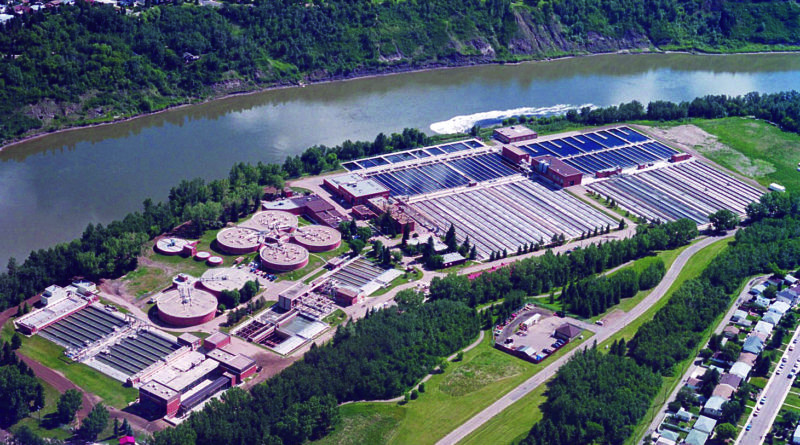
Driving the Adoption of Water Reuse
As the world continues to experience population growth and increasing urbanization and industrialization, the gap between water supply and demand is likely to increase unless the world changes its view on water resources.
In fact, according to reports, by 2050, the world will demand 55% more water1; and by 2025, an estimated two- thirds of the global population will live under water stress conditions.
But these projections do not have to be our destiny. We can help ensure a sustainable water future by changing how we think about water.
When confronted with water scarcity, we have three main options. First, we can conserve water. Conservation is an important first step, but it is often not sufficient.
Second, we can desalinate water, but this is not practical for all regions and it is very energy intensive. And third, we can treat wastewater so that it can be reused for things like growing crops, running power plants, and filling drinking water reservoirs.
Often the most feasible approach is the adoption of water reuse, and it can be the key to immediately and effectively mitigating the threat of water scarcity.
In many places around the world, countries are implementing policies to drive adoption of water reuse. For example, China is mandating reuse in its 13th 5-year plan, which calls for an increase in municipal reuse and mandates a decrease in industrial freshwater withdrawal.
In India, there are new municipal wastewater discharge and reuse standards that are following the California Title 22 model. In Saudi Arabia, the government has set national reuse targets; and in Mexico, there is a national water program, whose goals include not only improving access to drinking water, but also increasing the reuse of treated wastewater for various purposes.
At the same time that governments are looking to drive greater reuse, many companies are also increasingly focusing on water reuse as a way to meet sustainability goals or simply to ensure adequate supplies of water for their operations.
Overall, even though water reuse is gaining momentum in many regions around the globe, there is still room for growth. It is estimated that globally only four percent of wastewater is currently reused.
We see success in certain regions. In Israel for example, nearly 80 percent of wastewater is reused, and in Singapore, 40 percent of water demand is met with what is called NEWater, the brand name given to reclaimed water produced by Singapore’s Public Utilities Board.
So how do we make a conceptual and operational shift to increase water reuse globally?
One of the most immediate opportunities for water reuse lies in the industrial sector, where globally and especially in European countries, there is a new focus on the Circular Economy.
The goal is to move from today’s linear approach of a ‘take, make, dispose’ economic model and move to one where we recycle and reuse as much as we can.
For water reuse, this requires industry to capture, purify and reuse wastewater to reduce the amount of freshwater required.
To make increased water reuse a reality, it will take a combination of corporate sustain- ability programs, collaboration with NGOs and a commitment at the government level to unlock opportunities for water reuse programs.
Policy Changes to Promote Reuse
While there are many programs that can help spur adoption of water reuse, there are four main policy options that the government can use to help both the industrial and municipal segments move towards reuse.
Education and Outreach
Education and outreach is important to driving water recycling and reuse because it not only encourages its use, but it helps to overcome public concerns about the safety and quality of recycled water.
For this reason, many communities with a water-recycling program have active public education and community outreach programs. These programs are often supplemented by state and regional-level government campaigns.
Common types of education and outreach programs include recognition awards and certification programs, and the positive promotion of water recycling and reuse programs.
Removing Barriers
Barriers can include regulatory, technical, and financial obstacles. Governments can help overcome these barriers by setting specific quality standards for recycled water and providing guidance on the use of reclaimed water.
While water recycling and reuse is often constrained by state or federal requirements, communities do have control over local building and development codes as well as local funding all of which can play a significant role in encouraging or discouraging water recycling and reuse.
Incentives
Economic incentives can be a large influence in the creation of water reuse programs. Several options include:
› Pricing recycled water to be cheaper than potable water
› Linking water usage to conservation programs
› Exempting recycled water users from many of the community’s conservation requirements
› Providing subsidies or grants for water recycling and reuse
› Creating government procurement programs for water recycling and reuse technologies and infrastructure.
Mandates, Regulations and Standards
Communities facing severe water restrictions due to natural water scarcity, population growth, or resource overuse frequently adopt laws requiring the use of recycled water.
There are two common approaches to mandating the use of recycled water: requirements targeting the supply of recycled water by regional or local wastewater treatment or water supply districts; and requirements affecting the use of recycled water by residents or businesses.
Technology Innovation
Technology does exist today to treat wastewater to quality levels suitable for both industrial purposes as well as potable reuse.
However, it is important to take a fresh approach in how the technology is implemented.
For water reuse to make economic sense to many industrial facilities, there must be an understanding of the water quality needs based on intended use.
For example, the level of water quality required for a cooling tower is different compared to a boiler or the various process washes.
Water recycling and reuse engineered with a fit-for-purpose approach looks at how a facility can use custom local clusters of treatment driven by distinct reuse objectives.
With targeted endpoints in mind, technology providers and engineering consultants can create the most water-efficient and low-energy design for a specific need.
By using a fit for purpose approach, a facility or utility can avoid unnecessary costs associated with over treatment.
Technology trends
Creating a water reuse process isn’t a one size fits all approach. It requires selecting a from a wide spectrum of technology to meet specific needs, which is why we are seeing technologies combined in different ways for specific water reuse flow sheets. Several trends we are seeing include:
MBR for retrofits
Membrane Bioreactor (MBR) technology is a gold standard for reuse. MBRs are great for plants that don’t have a large footprint, making them suitable for retrofits or plant expansions within a specific space.
There are ongoing efforts to integrate MBR into the regulatory framework Monitoring will continue to grow
As water reuse programs increase, so will the level of monitoring that the government will require. This will be especially true in terms of potable reuse to account for public safety.
EDR for TDS removal
Brine solutions with Electrodialysis Removal (EDR) is gaining momentum. EDR is a great solution for any wastewater stream that needs Total Dissolved solids (TDS) removal prior to reuse.
It has a high recovery and low fouling tendency. It is used after an MBR (or tertiary UF) where TDS removal is required and in lieu of a Reverse Osmosis system.
Tough to treat waters
For even tougher to treat waters, zero liquid discharge technology (ZLD) can achieve around 98% reuse. Areas like china are man- dating ZLD for specific new plant construction to protect environmental sources.
Improved economics
Water tariffs tend to be low in many parts of the world, which often leads to an economic barrier to getting business and communities to adopt reuse.
In other words, it is often simply cheaper to keep taking water from the ground, a river, or even a potable municipal system, than it is to implement water reuse technologies.
Thus, technology providers are constantly looking to bring down the operating costs of these technologies. R&D activities focus on innovative applications to achieve water reuse in more energy efficient ways and in ways that increase capacity within a smaller footprint.
As global population, water scarcity, and urban and industrial development continue to increase, there will be a need to create new water sources to address water needs.
Conservation is important, but not enough on a global scale. Desalination is an option for coastal areas but can be energy intensive.
Water reuse is the key to immediately and effectively reversing the threat of water scarcity and helping the water create a sustainable water future.




